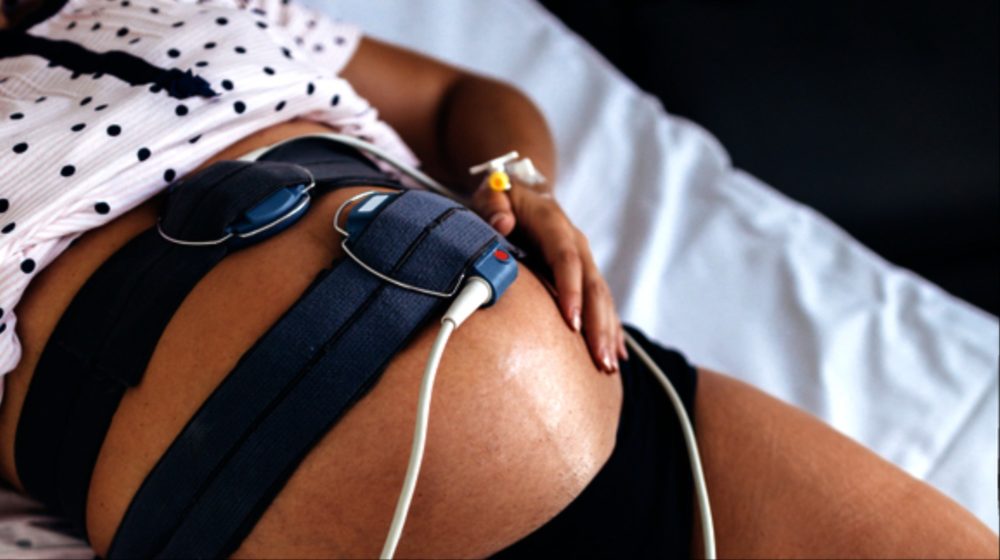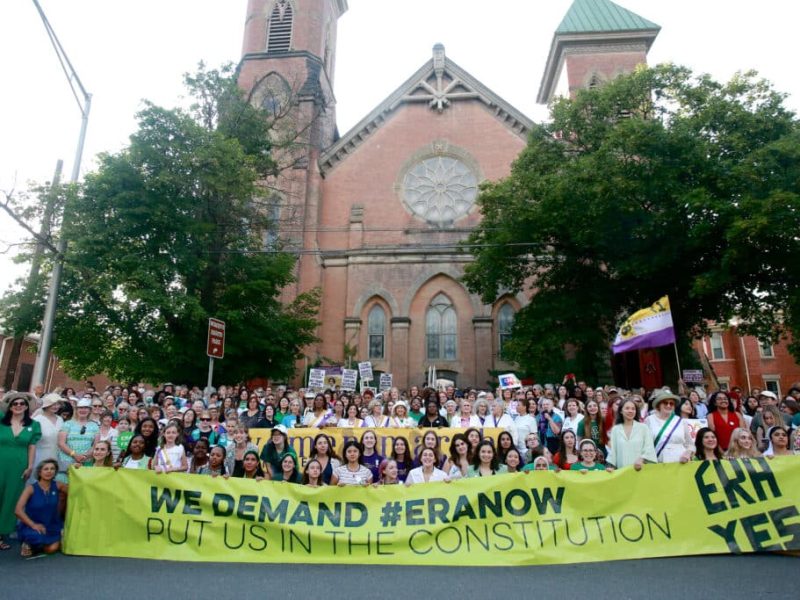
Imagine a woman in a silent room all to herself. She is trembling from excitement and her eyes are filled with tears. In her hand is a pregnancy test that reads a positive result and, in that moment, she realizes that she has roughly seven months to prepare for a new life to come into the world. But what she doesn’t know is that she only has seven more months to live the rest of hers.
This is the reality for women like Kira Dixon Johnson, 39, of Los Angeles, California. She was scheduled to have a cesarean-section to give birth to her second child at Cedars-Siani Medical Center, a top-ranking healthcare facility. The procedure went smoothly, and the mother and father were able to spend time with their two sons as a family immediately following. But just hours after the birth, Johnson started to feel lethargic and winced in pain as her uterus became more sensitive to the touch. When blood began to appear in her catheter, Johnson’s husband sought help. A CT scan was ordered to check for internal bleeding, but it never took place. He was told his wife was not a priority. Johnson died the following day.
Charlene Flores, 27, of San Fresno, Ca. had been suffering from a heart ailment. When Flores went into labor in October of 2018, a difficult decision had to be made. She was bleeding internally and her physician decided that the safest way for delivery was via cesarean section. Although this birthing procedure is routine, it is still a high-risk surgery that can cause complications such as hemorrhaging and infection at the incision site. Aware of the potential risks, Flores still put her trust in the doctors. A healthy baby girl was born minutes later, but the mother and daughter never met. Flores’s heart gave out on the operating table.
Several months later in May 2019, Sara Sewald, 26, of Colorado Springs, Co. was expecting twins. Throughout her pregnancy, Sewald suffered from preeclampsia, a condition during the gestational period that results in high blood pressure and fluid retention. It can cause hands and feet to swell which can also affect circulation and cause blood clots. Doctors had recommended a cesarean-section during a routine check-up ,and the following day Sewald gave birth to a boy and a girl. The moment between the mother and her newborn children would not last beyond the delivery room, however. Sewald died from internal bleeding after the surgery.
Johnson, Flores and Sewald represent just two of approximately 700 women who die from childbirth each year in the United States. But an estimated 50 percent of those deaths could have been prevented, according to the Center for Disease Control. Unfortunately, however, quality care in the U.S. is not guaranteed, particularly for women.
Although the US spends the most money on healthcare compared to other nations ($3.5 trillion), it is the also the most dangerous country to give birth in the developed world. This is compounded by recent figures showing that 82 million Americans are either uninsured or do not have access to an adequate health care plan. This disparity makes women, especially those who are pregnant, increasingly vulnerable. If she has aged out, divorced, or became widowed, many of these women will no longer have access to insurance. Further, according to the National Partnership for Women and Families, black women are even more likely to be uninsured, face greater financial barriers to care when they need it and are less likely to access prenatal care.
Ratifying the Equal Rights Amendment would help to change that. According to the National Organization of Women (NOW), “Without the ERA, equality in pay, job opportunities, political structure, education, health care, including reproductive health care, and education will remain elusive. With an ERA, it would become significantly more difficult to roll back progress on women’s equality.”
Further, without the ERA laws prohibiting discrimination against women are subject to the whims of Congress, which is of particular concern in today’s current political climate where we have already witnessed laws protecting women being changed, gutted, or even eliminated with a majority vote and the simple signature of the President. As ERA activist Alice Paul once said: “We shall not be safe until the principle of equal rights is written into the framework of our government.”
Examples of how women’s healthcare has recently been turned back include:
*The state of Alabama has enforced an abortion ban as of May 2019. Doctors are not allowed to perform abortions unless the mother’s health is at risk.
*Ohio, Kentucky, Missouri, Arkansas, Louisiana, Utah, Mississippi and Georgia are in favor of a “heartbeat” bill. Once a fetal heartbeat is detected, commonly occurring at the six-week mark when women typically first find out that they are pregnant, undergoing an abortion would be considered an illegal offense that could be punishable by prison time. This is of even more concern for women in Georgia, since they are more likely to be homeless than men in that state. Should these women may not be able to afford a pregnancy test, they may have to wait until a missed menstrual cycle to discover they could be pregnant. By the time help is sought, it may be too late, and causing her to suffer in silence not only for nine months, but beyond.
Although there are options available, like the National Network of Abortion Funds, which can provide financial assistance for women who are homeless or making a low income, it often proves difficult to gain access to these medical offices since they are more likely to be located within a metropolitan area, making travel difficult and expensive. “A pregnant women might have to drive 50 miles, sometimes 100 miles just to get to an OBGYN,” said Dr. Krystal Redman, a public health doctor and executive director of, Spark Reproductive Justice Now, located in Atlanta, Ga. “That’s why in the state of Georgia, it is safer to have a legal abortion than it is for a woman to carry out a full-term pregnancy and have a c-section. “It’s dangerous when a doctor is not nearby,” she continued. Compounding this is systematic oppression “Studies show that the black mortality and morbidity rate in black women in higher and more prominent in the south because that’s where systematic oppression has been rooted,” she added.
Black women earn $21,698 less than the median wages for non-Hispanic white men, according to a 2018 study from the National Partnership for Women and Families. This gap makes it harder to obtain food, shelter and healthcare. The can cause the body to internalize greater stress by having a lack of resources. “Women of color go through weathering,” Dr. Redman said. Weathering is when a body prematurely deteriorates and becomes more susceptible to health issues. “If a woman has high blood pressure or hypertension, she is more likely to have risks during pregnancy. If she is not close to a doctor or is not receiving quality care, then she is at greater risk of maternal mortality.”
Comparatively, countries that have already ratified an ERA such as Denmark, Italy and Japan guarantee free and equal access to healthcare and have been reported to have the lowest maternal mortality rates in the world. Unfortunately, in the US, women’s healthcare has been increasingly challenged under the Trump administration. “We cannot decrease the maternal mortality rate or other issues that pertain to pregnancy until we have discussions that are about systematic injustice while having a healthcare plan for all as an equitable resource.”

Tatyana Turner is a student at Columbia University’s Graduate School of Journalism. She is a 2019 fellow in the Sy Syms Journalistic Excellence Program* at Women’s eNews, funded by the Sy Syms Foundation. The Sy Syms Journalistic Excellence Program at Women’s eNews fellowship supports editorial and development opportunities for editorial interns in the pursuit of journalistic excellence.
Sy Syms Journalistic Excellence Program
The Sy Syms Journalistic Excellence program at Women’s eNews was launched in 2014 with support from the Sy Syms Foundation. The fellowship provides support and development opportunities for editorial interns in the pursuit of journalistic excellence.
“For a democracy to flourish all voices must be heard.” said Marcy Syms, a founding Trustee and President of the Sy Syms Foundation. “Through its investigative reporting Women’s eNews gets at the essence of good journalism. The Sy Syms Foundation is proud of this collaboration to support today’s newest women journalists.”
As part of it’s mission to create social change for women and girls through investigative reporting, Women’s eNews helps foster, train, and support the career development of new journalists with a focus on social justice and women’s rights.


